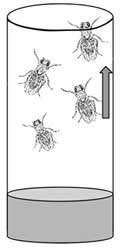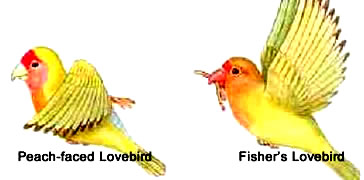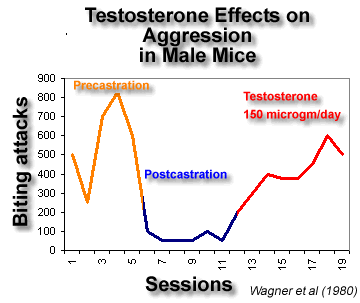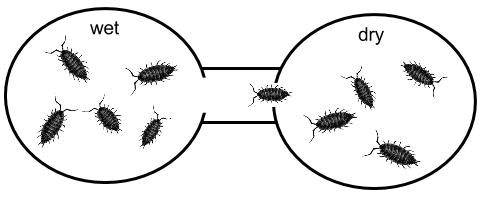Which Way Did It Go? - An Investigation of Animal Behavior
Part 1: Nature versus Nurture
Whether you are watching an animal documentary on tv, playing with your dog outside or idly watching fish in an aquarium, you are observing animal behavior. Some behaviors may be puzzling, like the toads in the spring that start to chirp or the aggressive actions of a sea lion on a dock. The reason for the behaviors may not always be clear and scientists studying behavior often wrestle with a fundamental question about the origins of the behavior. Behaviors fall into two broad categories:
Learned Behavior: Behavior that an animal is not born with, but one that develops through experience. Animals can be trained using positive and negative reinforcement to avoid or reinforce behaviors. For example, a dog that receives a treat for sitting will learn the sit command.
Innate Behavior: This behavior is something an animal is born with, they are sometimes referred to as instincts or intrinsic behavior. Questions arise about these behaviors because it may not always be clear what purpose they serve. Biologists also explore the genetics of behavior, making an assumption that the code for innate behaviors must be found within the DNA of the organism and passed from one generation to the next.
1. Suggest 2 types of learned behaviors and two innate behaviors that you have observed in animals (cats, dogs, whales, humans)
2. Why would it be assumed that innate behaviors were coded somewhere in DNA?
3. Fruit flies display geotaxis, or a response to the earth's gravity. If the flies are within a vial and the vial is flipped upside down, the flies will crawl to the top of the vial. A researcher notices that a group of flies that had been exposed to radiation no longer exhibit geotaxis. How could you provide further evidence that this behavior is innate and not learned?

4. Human behavior is difficult to study for ethical reasons. One famous experiment attempted to determine if a fear of snakes was an innate or learned behavior in humans. Suggest a way (experiment) that this question could be answered.
Part 2: How (and Why) is Behavior Studied?
Ethology is the study of animal behavior and is most often concerned withthe innate behaviors. Biologists study animal behavior from two different points of view:
Proximate questions address the mechanisms that produce a behavior: the environmental stimuli that trigger a behavior and the genetic and physiological mechanisms that make it possible. For example, how does an animal carry out a behavior? Often behaviors are triggered by chemicals, like hormones.
Ultimate questions address the evolutionary significance of a behavior: how a behavior increases the evolutionary fitness of the animal demonstrating it, helping it to survive and reproduce in its environment. For example, why does the animal show this behavior?

Consider the following study by William Dilger, a professor of ornithology at Cornell University. He had studied lovebirds for many years and wanted to learn about their breeding and social behaviors, specifically whether the nest building behavior was one that was learned through social interactions or inherited as an instinct.
He observed that all species of lovebirds tear strips from leaves to create a nest, but they carried the strips to their nest in different ways. The peach faced lovebird stuffs the strips into its rump feathers; the Fisher's lovebird keeps the material held in its beak. Professor Dilger wondered what would happen if he bred the two species together. He discovered that the hybrids were initially incapable of buidling nests because they would make unsuccessful attempts at stuffing the nesting material in their rump feathers. The birds eventually got better at keeping the material in their beaks and were able to build nests. Amazingly, even the birds who learned to carry the twigs in their beaks would still make a turning movement of their head, as if they were stuffing the twigs in their rump feathers.
6. Was Dilger's experiment answering proximate or ultimate questions about the birds? Defend your choice.
7. Suggest a way Dilger could have answered his question if the birds were NOT able to breed with one another and create a hybrid. Remember that he was answering the question about whether the behavior was genetic (nature) or learned (nurture).

8. Certain behaviors are usually only observed in males of species. For example, urine marking, aggressiveness, vocalizations. A study on mice shows patterns of aggressions before and after castration, a procedure where the testes of the mice were removed.
Using the graph, draw conclusion about the role of testosterone and behavior.
Would this study be asking an ultimate or proximate question? Why?
9. How can studies on mice and testosterone serve as a MODEL for understanding human behavior?
Part 3: What regulates behavior?
Homeostatic mechanisms across phyla reflect both continuity due to common ancestry and change due to evolution. In plants and animals, defense mechanisms against disruptions of dynamic homeostasis have evolved. The timing and coordination of developmental, physiological, and behavior events are regulated, increasing fitness of individuals and long-term survival of populations.
Organisms use feedback mechanisms to regulate growth and reproduction and to maintain dynamic homeostasis. Organisms respond to changes in their internal and external environments through behavior and physiological mechanisms. In animals, these mechanisms include migration, sweating, shivering, or going into hibernation. Organisms use negative feedback mechanisms to maintain their internal environments by returning the changing condition back to its set point. Examples of negative feedback responses include temperature regulation in animals, and responses to drought in plants.
Orientation is a process by which animals position themselves with respect to spatial features of their environments. Taxis involves the turning of an animal's body relative to a stimulus - either toward or away, like the fruit flies that move in response to gravity. There are several types of taxis (geotaxis, phototaxis, chemotaxis.)
Taxis can also be negative where the animal avoids the stimulus, or positive, where the animal moves toward the stimulus. Kinesis is a random movement of an animal in relation to a stimulus, like cockroaches scattering when the light is turned on.
10. Brainstorm various types of taxis that can be observed in animals. Describe two that have not been previously mentioned. What evolutionary advantage would these behaviors serve?
11. Consider the following example: A researcher places a dead rotting mouse on one side of a testing chamber and then adds 10 beetles to each side of the chamber. The beetles can either choose to go in the direction of the rotting mouse or away from the rotting mouse. The researcher than collects data on the movements of the beetle, recording how many beetles were on which side of the chamber.
| Number of Beetles Observed on Each Side | ||
| Time | Rotting Mouse | Empty |
| 0 minute (start) | 5 | 5 |
| 1 minute | 4 | 6 |
| 2 minutes | 6 | 4 |
| 3 minutes | 8 | 2 |
| 4 minutes | 9 | 1 |
| 5 minutes | 8 | 2 |
Based on the data, what can you conclude about the beetle's behavior. Do they exhibit taxis?
How could you be sure that the numbers do not indicate random movement? (Hint: There's an equation for this.)
Use the equation to show that the hypothesis that beetles exhibit taxis toward rotting food.To do this you must consider the NULL HYPOTHESIS, which would propose that beetles spent the same amount of time on each side of the container.
Part 3: Design and Investigate
As a group decide how you will conduct an experiment to determine if an animal exhibits taxis. Your teacher will provide you with various materials and organisms to test. For this investigation, you will be provided with a "choice chamber" which allows you to create two separate environments to test as shown in the example below. You are also free to design and build a choice chamber from bottles, aquariums or other materials available to you. You may test many different materials, but remember good scientists only test one variable at a time.

Animal Models: Your teacher will provide you with organisms to test, common specimens to use in these experiments are fruit flies, crickets, mealworms, and isopods. It is important to consider the safety of your animal specimens, your goal here is to observe and not harm the organism.
Factors you could choose to investigate: temperature, moisture, pH (vinegar, baking soda), food sources, odor (ammonia)
12. Sketch/describe your experimental design. Pay attention to how you will control variables so that you are only testing the organism's response to a single factor. Make a note of any additional materials you may need for your design. After your teacher approves your design, you will move to the test phase.
13. Using your design, gather data to determine if your organism exhibits taxis. Your data should be collected neatly and attached to this study. Include any sketches or revisions to your design and write a final analysis that answers the following questions:
a) Did your organisms exhibit taxis? What kind of taxis is it? How do you know?
b) Would you consider taxis to be a learned or innate behavior? Why?
c) How is behavior related to homeostasis?
d) Suggest reasons for the observed behavior; consider it from an evolutionary point of view (ultimate question.)
e) How could you have have improved your design?

